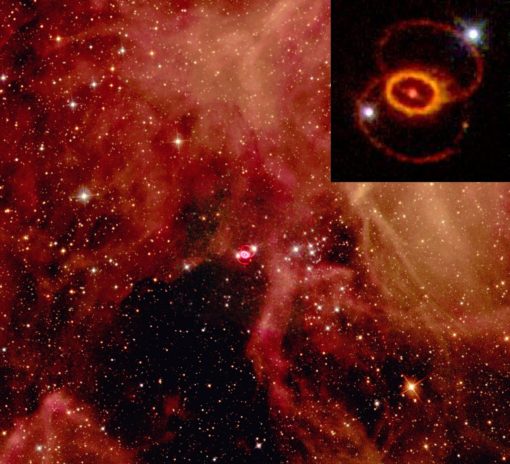Cosmic Creation Model and the First Stars
The biggest remaining gap in validating the big bang creation model is now being filled
In attempting to achieve a comprehensive validation of the biblically predicted big bang creation model1the greatest challenge for astronomers has been assembling a detailed history for the formation of the universe’s first stars. One problem is that such stars are extremely difficult to observe. A second problem is that theoretical models for explaining the physics of star formation during the universe’s early history are notoriously difficult to formulate. However, thanks to the most ambitious simulation of star formation to date, assuming zero and very low metal abundance conditions (elements heavier than helium are required for stars to form), the biggest remaining gap in validating the big bang creation model is now being filled.
Three astronomers in Germany successfully simulated conditions in the early universe; first when the universe was so young that it had no stars at all, and then when only a few of the first stars had completed their burning history.2 In the first situation the universe contains only the elements hydrogen and helium. And the fireball of the big bang creation event remains at temperatures conducive for nuclear fusion for only about 20 seconds. Such a brief period does not allow any elements, other than helium, trace amounts of deuterium (heavy hydrogen), and lithium, to form from the primordial proton sea.
The challenge confronting big bang theorists is how to get primordial gas clouds to cool sufficiently so that they can condense to form stars (heat tends to disperse the gas) without the existence of any metals to produce any dust. The German team discovered the solution to this challenge. They found that the conservation of angular momentum as the early universe expands causes massive, marginally unstable disk-like structures to form. The marginal instability leads to the formation of a small population of very large stars, stars with masses in excess of several tens of solar masses.
The huge masses of the first-formed stars imply that they will all burn up within a few million years or less. Such a consequence virtually guarantees that astronomers will never observe them. Having burned out so long ago, they would be visible only at a distance of 13.4 billion light-years from Earth (age of the universe minus the time required for the universe to expand sufficiently for star formation to even be possible). Such an enormous distance would make these stars, as massive as they are, too faint for even the most powerful available telescopes to detect. (The next generation of telescopes, if funded, may be able to detect a small cluster of such stars. However, the German model predicts that, because so few of these first stars form, even small clusters of them will be rare or nonexistent.)
Current technology can test the German model’s predictions for the next stars that form after the burning out of the first stars. Their model establishes that all the giant first-formed stars will undergo a supernova eruption at the end of their nuclear burning history. These supernova eruptions will pollute their individual primordial galaxies so that one one hundred thousandth (0.00001) of the ordinary matter in each primordial galaxy will be comprised of elements heavier than helium. Such a “metallicity,” as low as it is, results in enough dust cooling to induce vigorous fragmentation of the gas within each primordial galaxy. Consequently, very densely packed clusters of low-mass stars form.
The German model also predicts that the mean stellar mass of the second stage of star formation will be slightly below the mass of the Sun. At that mass the stars can burn for a long enough time that a large fraction of them will still be burning today. Given the model’s predicted number of such stars, astronomers should experience only a little difficulty discovering these stars and measuring their properties. The model even predicts where such stars are most likely to be located, namely in the far outer reaches of the halos of large galaxies. Because the stars are expected to be less massive than the Sun and are predicted to be located in the outer reaches of our Milky Way Galaxy’s halo, their anticipated brightness as seen on Earth will be very dim. However, the German team expects that at least a few them should be detectable by the largest available telescopes.
At the close of their paper, the German team points out that, astronomers already have observed a number of stars in the Milky Way Galaxy’s outer halo that manifest the characteristics of their predicted second stage of star formation. In fact, just nine days before the German team’s paper appeared in the Astrophysical Journal, the same journal featured another paper by a separate team of eight astronomers from the United States, Sweden, and Germany. This earlier study announced the discovery of four more stars matching the predicted properties of the German team’s second stage of star formation.3
Scientists gain confidence that models are correct when observations match models. In this case, detailed modeling of the earliest star formation in the history of the universe, based on the big bang creation model, matches detailed observations of that history. RTB scholars thus affirm that the biblically predicted big bang model has passed yet another test.
Endnotes
- Hugh Ross, The Creator and the Cosmos , 3rd ed. (Colorado Springs: NavPress, 2001), 23-29.
- Paul C. Clark, Simon C. O. Glover, and Ralf S. Klessen, “The First Stellar Cluster,” Astrophysical Journal 672 (January 10, 2008): 757-64.
- Judith G. Cohen et al., “New Extremely Metal-Poor Stars in the Galactic Halo,” Astrophysical Journal 672 (January 1, 2008): 320-41.






